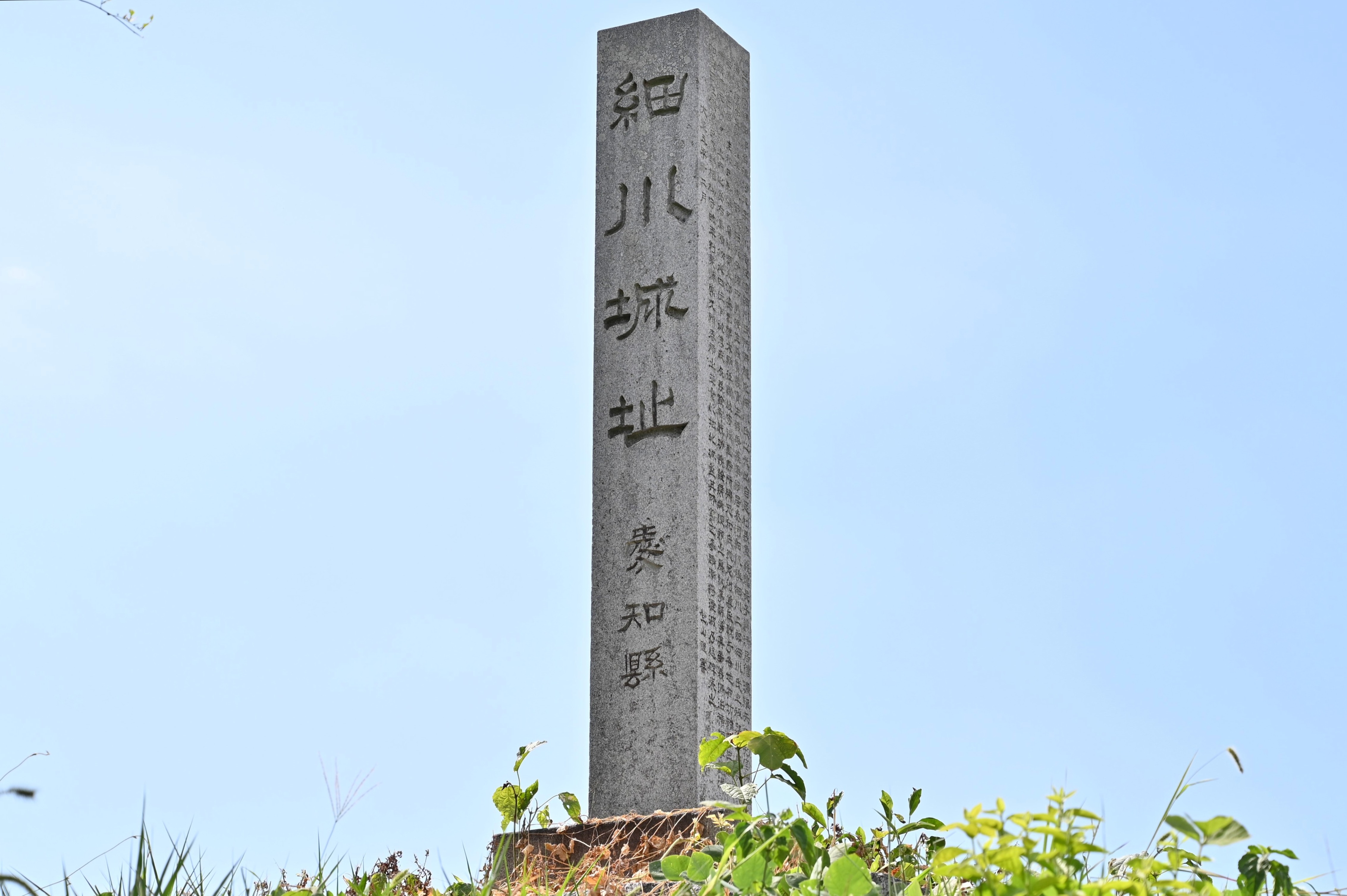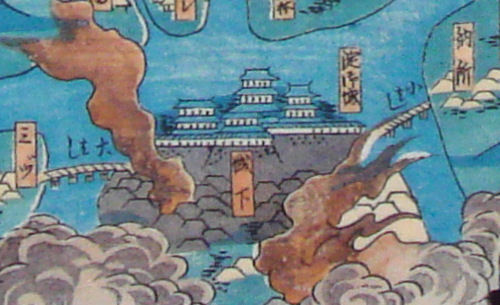|
Yakushiji Motoichi
was a Japanese samurai of the early Sengoku period, who served the Hosokawa clan. Motokazu was a retainer of Hosokawa Masamoto and deputy governor of Settsu Province. In the Autumn of 1504 he rebelled against Masamoto and marched to Kyoto but his rebellion was defeated seventeen days later when Masamoto's forces took his castle of Yodo. Motokazu was captured and committed seppuku , sometimes referred to as hara-kiri (, , a native Japanese kun reading), is a form of Japanese ritual suicide by disembowelment. It was originally reserved for samurai in their code of honour but was also practised by other Japanese people .... References {{DEFAULTSORT:Yakushiji, Motokazu Daimyo 1475 births 1504 deaths Suicides by seppuku 16th-century suicides ... [...More Info...] [...Related Items...] OR: [Wikipedia] [Google] [Baidu] |
Samurai
were the hereditary military nobility and officer caste of medieval and early-modern Japan from the late 12th century until their abolition in 1876. They were the well-paid retainers of the '' daimyo'' (the great feudal landholders). They had high prestige and special privileges such as wearing two swords and ''Kiri-sute gomen'' (right to kill anyone of a lower class in certain situations). They cultivated the '' bushido'' codes of martial virtues, indifference to pain, and unflinching loyalty, engaging in many local battles. Though they had predecessors in earlier military and administrative officers, the samurai truly emerged during the Kamakura shogunate, ruling from 1185 to 1333. They became the ruling political class, with significant power but also significant responsibility. During the 13th century, the samurai proved themselves as adept warriors against the invading Mongols. During the peaceful Edo period (1603 to 1868), they became the stewards and chamberlains of ... [...More Info...] [...Related Items...] OR: [Wikipedia] [Google] [Baidu] |
Sengoku Period
The was a period in History of Japan, Japanese history of near-constant civil war and social upheaval from 1467 to 1615. The Sengoku period was initiated by the Ōnin War in 1467 which collapsed the Feudalism, feudal system of Japan under the Ashikaga shogunate. Various samurai warlords and Japanese clans, clans fought for control over Japan in the power vacuum, while the emerged to fight against samurai rule. The Nanban trade, arrival of Europeans in 1543 introduced the arquebus into Japanese warfare, and Japan ended its status as a Tributary system of China, tributary state of China in 1549. Oda Nobunaga dissolved the Ashikaga shogunate in 1573 and launched a war of political unification by force, including the Ishiyama Hongan-ji War, until his death in the Honnō-ji Incident in 1582. Nobunaga's successor Toyotomi Hideyoshi completed his campaign to unify Japan and consolidated his rule with numerous influential reforms. Hideyoshi launched the Japanese invasions of Korea (159 ... [...More Info...] [...Related Items...] OR: [Wikipedia] [Google] [Baidu] |
Hosokawa Clan
The is a Japanese Samurai kin group or clan. Ancestors # Emperor Jimmu # Emperor Suizei # Emperor Annei # Emperor Itoku # Emperor Kōshō # Emperor Kōan # Emperor Kōrei # Emperor Kōgen # Emperor Kaika # Emperor Sujin # Emperor Suinin # Emperor Keikō # Yamato Takeru # Emperor Chūai # Emperor Ōjin # Wakanuke Futamata no Kimi # Ohohoto no Kimi # Ohi no Kimi # Ushi no Kimi # Emperor Keitai # Emperor Kinmei # Emperor Bidatsu # Prince Oshisaka # Emperor Jomei # Emperor Tenji # Prince Shiki # Emperor Kōnin # Emperor Kanmu # Emperor Saga # Emperor Ninmyō # Emperor Montoku # Emperor Seiwa # Prince Sadazumi # Minamoto no Tsunemoto # Minamoto no Mitsunaka # Minamoto no Yorinobu # Minamoto no Yoriyoshi # Minamoto no Yoshiie # Minamoto no Yoshikuni # Minamoto no Yoshiyasu # (Ashikaga) Minamoto no Yoshikiyo # (Hirosawa) Ashikaga Yoshizane # (Ashikaga) Hosokawa Yoshisue History The clan was descended from the Seiwa Genji, a branch of the Minamoto clan, and ultimately from Emperor Se ... [...More Info...] [...Related Items...] OR: [Wikipedia] [Google] [Baidu] |
Hosokawa Masamoto
was a deputy-''shōgun'' of the Hosokawa clan of Japan, and son of Hosokawa Katsumoto. Masamoto was appointed to this rank during 1486. For a brief period this title was lost by Hatakeyama Masanaga but was regained in time. When Ashikaga Yoshihisa died childless during the year of 1489, Masamoto supported the nomination of Ashikaga Yoshizumi as successor in opposition to Ashikaga Yoshitane. Masamoto thought that the post of deputy-shogun would return to Hosokawa Masanaga due to Yoshitane's closeness with Hatakeyama Masanaga and his own objections to Yoshitane's rise. During Masanaga's struggle with a rival branch of the Hatakeyama clan, Yoshitane led troops to the assistance of Masanaga. Masamoto then assisted his force to the Hatakeyama, ultimately defeating those of Masanaga and Yoshitane. Masanaga killed himself during the battle and Yoshitane became a prisoner at Kyoto. His childhood name was Sumiakamaru (聡明丸). Masamoto exiled Yoshitane and made Ashikaga Yoshizumi t ... [...More Info...] [...Related Items...] OR: [Wikipedia] [Google] [Baidu] |
Settsu Province
was a province of Japan, which today comprises the southeastern part of Hyōgo Prefecture and the northern part of Osaka Prefecture. It was also referred to as or . Osaka and Osaka Castle were the main center of the province. Most of Settsu's area comprises the modern day cities of Osaka and Kōbe. History During the Sengoku period, the Miyoshi clan ruled Settsu and its neighbors, Izumi and Kawachi, until they were conquered by Oda Nobunaga. The provinces were ruled subsequently by Toyotomi Hideyoshi. The regents of Hideyoshi's son soon quarreled, and when Ishida Mitsunari lost the Battle of Sekigahara, the area was given to relatives of Tokugawa Ieyasu. It was from then on divided into several domains, including the Asada Domain. Sumiyoshi taisha was designated as the chief Shinto shrine (''ichinomiya'') for the province. [...More Info...] [...Related Items...] OR: [Wikipedia] [Google] [Baidu] |
Kyoto
Kyoto (; Japanese: , ''Kyōto'' ), officially , is the capital city of Kyoto Prefecture in Japan. Located in the Kansai region on the island of Honshu, Kyoto forms a part of the Keihanshin metropolitan area along with Osaka and Kobe. , the city had a population of 1.46 million. The city is the cultural anchor of a substantially larger metropolitan area known as Greater Kyoto, a metropolitan statistical area (MSA) home to a census-estimated 3.8 million people. Kyoto is one of the oldest municipalities in Japan, having been chosen in 794 as the new seat of Japan's imperial court by Emperor Kanmu. The original city, named Heian-kyō, was arranged in accordance with traditional Chinese feng shui following the model of the ancient Chinese capital of Chang'an/Luoyang. The emperors of Japan ruled from Kyoto in the following eleven centuries until 1869. It was the scene of several key events of the Muromachi period, Sengoku period, and the Boshin War, such as the Ōnin War, the Ho ... [...More Info...] [...Related Items...] OR: [Wikipedia] [Google] [Baidu] |
Yodo Castle
The was a Japanese domain of the Edo period, and the only domain located in Yamashiro Province. Its castle was located within modern-day Fushimi, Kyoto. The strategic location of the castle figured in the 1582 Battle of Yamazaki. During the 1868 Battle of Toba–Fushimi, the master of Yodo changed his allegiance from the Shogunate to Imperial forces, going as far as closing his gate and refusing protection to the retreating army of the ''shōgun'' Tokugawa Yoshinobu. List of lords * Matsudaira (Hisamatsu) clan ( Shinpan; 35,000 koku) #Sadatsuna *Nagai clan ( Fudai; 100,000→736,000 koku) # Naomasa #Naoyuki *Ishikawa clan ( Fudai; 60,000 koku) #Noriyuki #Yoshitaka #Fusayoshi * Matsudaira (Toda) clan ( Fudai; 60,000 koku) #Mitsuhiro #Mitsuchika * Matsudaira (Ogyū) clan ( Fudai; 60,00 koku) #Norisato *Inaba clan ( Fudai; 102,000 koku The is a Chinese-based Japanese unit of volume. 1 koku is equivalent to 10 or approximately , or about . It converts, in turn, to 1 ... [...More Info...] [...Related Items...] OR: [Wikipedia] [Google] [Baidu] |
Seppuku
, sometimes referred to as hara-kiri (, , a native Japanese kun reading), is a form of Japanese ritual suicide by disembowelment. It was originally reserved for samurai in their code of honour but was also practised by other Japanese people during the Shōwa period (particularly officers near the end of World War II) to restore honour for themselves or for their families. As a samurai practice, ''seppuku'' was used voluntarily by samurai to die with honour rather than fall into the hands of their enemies (and likely be tortured), as a form of capital punishment for samurai who had committed serious offences, or performed because they had brought shame to themselves. The ceremonial disembowelment, which is usually part of a more elaborate ritual and performed in front of spectators, consists of plunging a short blade, traditionally a ''tantō'', into the belly and drawing the blade from left to right, slicing the belly open. If the cut is deep enough, it can sever the abdominal ... [...More Info...] [...Related Items...] OR: [Wikipedia] [Google] [Baidu] |
Daimyo
were powerful Japanese magnates, feudal lords who, from the 10th century to the early Meiji period in the middle 19th century, ruled most of Japan from their vast, hereditary land holdings. They were subordinate to the shogun and nominally to the emperor and the '' kuge''. In the term, means 'large', and stands for , meaning 'private land'. From the ''shugo'' of the Muromachi period through the Sengoku to the ''daimyo'' of the Edo period, the rank had a long and varied history. The backgrounds of ''daimyo'' also varied considerably; while some ''daimyo'' clans, notably the Mōri, Shimazu and Hosokawa, were cadet branches of the Imperial family or were descended from the ''kuge'', other ''daimyo'' were promoted from the ranks of the samurai, notably during the Edo period. ''Daimyo'' often hired samurai to guard their land, and they paid the samurai in land or food as relatively few could afford to pay samurai in money. The ''daimyo'' era ended soon after the Meiji Resto ... [...More Info...] [...Related Items...] OR: [Wikipedia] [Google] [Baidu] |
1475 Births
Year 1475 ( MCDLXXV) was a common year starting on Sunday (link will display the full calendar) of the Julian calendar. Events January–December * January 10 – Battle of Vaslui (Moldavian–Ottoman Wars): Stephen III of Moldavia defeats the Ottoman Empire, which is led at this time by Mehmed the Conqueror of Constantinople. * July 4 – Burgundian Wars: Edward IV of England lands in Calais, in support of the Duchy of Burgundy against France. * August 29 – The Treaty of Picquigny ends the brief war between France and England. * November 13 – Burgundian Wars – Battle on the Planta: Forces of the Old Swiss Confederacy are victorious against those of the Duchy of Savoy, near Sion, Switzerland. * November 14 – The original Landshut Wedding takes place, between George, Duke of Bavaria, and Hedwig Jagiellon. * December – The Principality of Theodoro falls to the Ottoman Empire, arguably taking with it the final remnant of the successor t ... [...More Info...] [...Related Items...] OR: [Wikipedia] [Google] [Baidu] |
1504 Deaths
Fifteen or 15 may refer to: *15 (number), the natural number following 14 and preceding 16 *one of the years 15 BC, AD 15, 1915, 2015 Music *Fifteen (band), a punk rock band Albums * ''15'' (Buckcherry album), 2005 * ''15'' (Ani Lorak album), 2007 * ''15'' (Phatfish album), 2008 * ''15'' (mixtape), a 2018 mixtape by Bhad Bhabie * ''Fifteen'' (Green River Ordinance album), 2016 * ''Fifteen'' (The Wailin' Jennys album), 2017 * ''Fifteen'', a 2012 album by Colin James Songs * "Fifteen" (song), a 2008 song by Taylor Swift *"Fifteen", a song by Harry Belafonte from the album '' Love Is a Gentle Thing'' *"15", a song by Rilo Kiley from the album ''Under the Blacklight'' *"15", a song by Marilyn Manson from the album ''The High End of Low'' *"The 15th", a 1979 song by Wire Other uses *Fifteen, Ohio, a community in the United States * ''15'' (film), a 2003 Singaporean film * ''Fifteen'' (TV series), international release name of ''Hillside'', a Canadian-American teen drama *Fi ... [...More Info...] [...Related Items...] OR: [Wikipedia] [Google] [Baidu] |
Suicides By Seppuku
Suicide is the act of intentionally causing one's own death. Mental disorders (including depression, bipolar disorder, schizophrenia, personality disorders, anxiety disorders), physical disorders (such as chronic fatigue syndrome), and substance abuse (including alcoholism and the use of and withdrawal from benzodiazepines) are risk factors. Some suicides are impulsive acts due to stress (such as from financial or academic difficulties), relationship problems (such as breakups or divorces), or harassment and bullying. Those who have previously attempted suicide are at a higher risk for future attempts. Effective suicide prevention efforts include limiting access to methods of suicide such as firearms, drugs, and poisons; treating mental disorders and substance abuse; careful media reporting about suicide; and improving economic conditions. Although crisis hotlines are common resources, their effectiveness has not been well studied. The most commonly adopted method of suic ... [...More Info...] [...Related Items...] OR: [Wikipedia] [Google] [Baidu] |








.jpg)